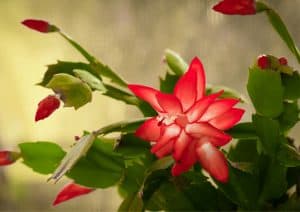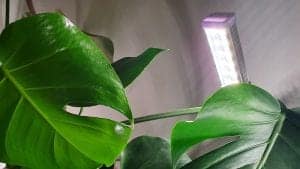Do Indoor Plants Need Direct Sunlight?
- Lakeisha Ethans
- April 9, 2022
If you buy something using the retail links in our articles, sometimes we earn a small affiliate commission. This does not impact the products we recommend.
Indoor plants are a great way to add a pop of color and life to a home, office, or other space that needs it. They make for beautiful decorations and are a brilliant choice for people who don’t have access to suitable areas for outdoor flora, like balconies or gardens. People who rent rooms or live in apartments will especially enjoy the versatility of these plants.
But don’t all plants need a little bit of sunlight, even indoor ones?
If you’re a new owner of some indoor plants, you may be concerned that there’s no way to have a plant that genuinely thrives indoors. You may have even heard some people say that there’s no such thing as a real indoor plant.
Is that true?
Whilst indoor plants benefit from access to natural sunlight ahead of artificial light, not all plants require direct sun exposure. Many of the most popular indoor plants actually thrive best without being placed under the open sun, preferring lower light environments or indirect lighting. The ideal amount of direct sunlight needed depends on the plant family and should ideally match what the plant receives in its natural surroundings.
So there’s no overarching answer to whether or not indoor plants require sunlight directly. Each plant species will have unique needs. On top of that, some plants can handle low light conditions at the expense of some features like flowering ability.
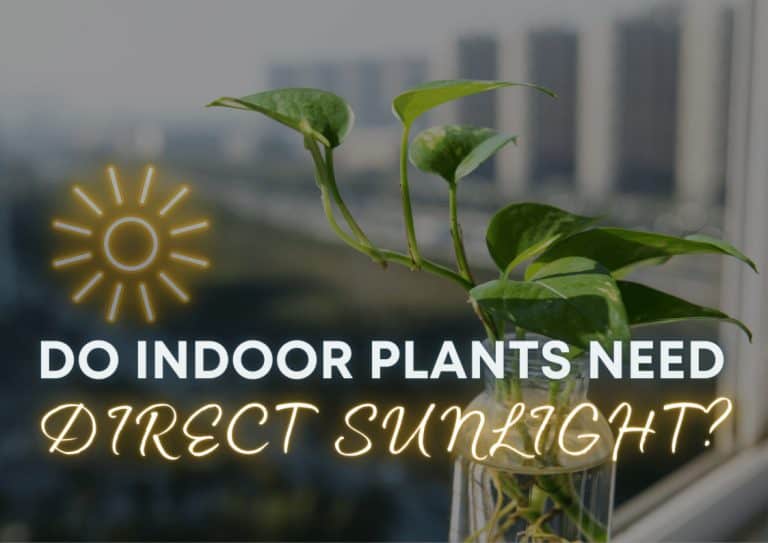
Direct sunlight plants vs indirect sunlight plants
Direct sunlight in the context of plant care has a simple definition: unfiltered, unshaded outdoor sunlight, streaming directly onto a plant with nothing blocking it aside from completely transparent materials.
Indoor plants can get direct sunlight, if necessary. Large windows from floor-to-ceiling, for example, can provide conditions that meet this definition. This is especially true for south-facing windows in the northern hemisphere and vice versa. With that being said, plants that need direct light will really thrive much better outdoors, perhaps on a patio or balcony.
Meanwhile, partial direct light or partial sunlight in the context of plant care refers to a mix of direct and indirect light. This is commonly done via morning light – plants are exposed to the sun in the morning, then as the day progresses and the heat gets too intense, they are shaded from the rays.
Some fussier indoor plants have this requirement, as they need to get some sun to survive well and manage the dimmer conditions for the rest of the day. The sun is almost like a “meal” to them. A sunny window usually provides indoor plants with the partial direct sunlight that they need.
Finally, indirect sunlight refers to any sunlight that is filtered. This means the sunlight may be passing through shaded windows or curtains. It could mean that a tree’s leaves provide shade for a smaller plant. Basically, the sunlight is being hindered from beating down on the plant with full force.
Many indoor environments primarily offer indirect sunlight. Indoor plants that survive in these conditions are likely accustomed to naturally low light environments of full or partial shade. They may also become damaged with excessive direct light exposure. Just remember that even “dim lighting” plants need sunlight, even if it’s indirect.
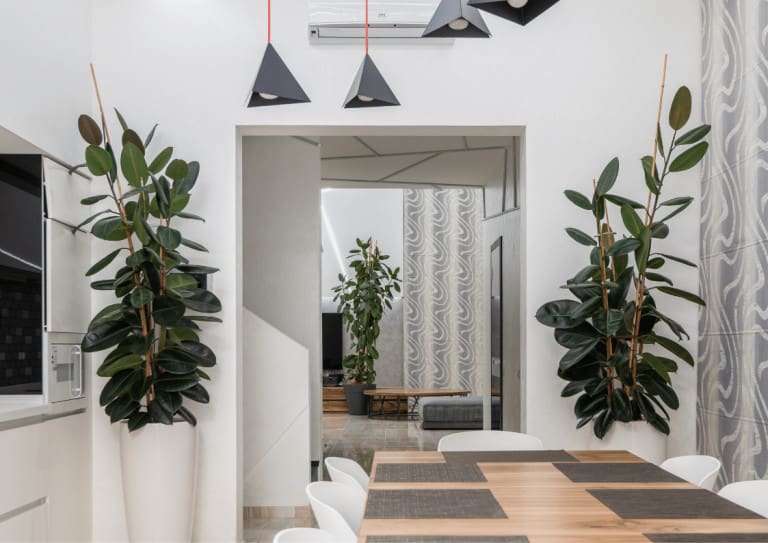
How much sunlight does an indoor plant need?
The exact amount of sunlight that an indoor plant needs depends on its species. You’ll need to do your own research for specific plant varieties to get a specific answer. But that’s not to say that we can’t provide some idea of indoor plants and the light they tend to need.
A majority of indoor plants need somewhere between six and 10 hours of daily sunlight. Flowering plants typically need a little more, with between 10 and 12 hours being ideal for best growth. Hardier plants, on the other hand, will need less, making do with six to eight hours.
Another factor that affects this is the type of light the plant prefers. Low light indoor plants don’t need as much light as medium-bright light plants; this goes without saying. Regardless, most plants will be okay with eight hours of sunlight if it’s provided consistently and reliably.
The final factor that affects an indoor plants’ preference for light is whether they are a long-day plant, short-day plant, or day-neutral plant. This refers to the way that the plant collects, stores, and uses energy throughout the day.
Long day plants, as their name suggests, need additional sunlight (or similar artificial light) to create their needed energy. They don’t typically have a lot of energy storage, meaning they use energy pretty much while they make it. They grow more quickly and soak up as much as they can during daylight hours.
Then, there are short-day plants. These plants prefer dim conditions and are often plants that can bloom in the winter months. They absorb energy from light quickly and keep it in reserves, allowing them to thrive without a lot of direct sunlight.
Last but not least, day-neutral plants have no specific restrictions when it comes to long day or short day preferences. All they need is a regular cycle of brightness and darkness that they can follow and adapt to! However, it’s worth noting that day-neutral plants are merely flexible, not entirely self-sufficient; they still need light to grow, they’re just not fussed about the timing and nature of that light.
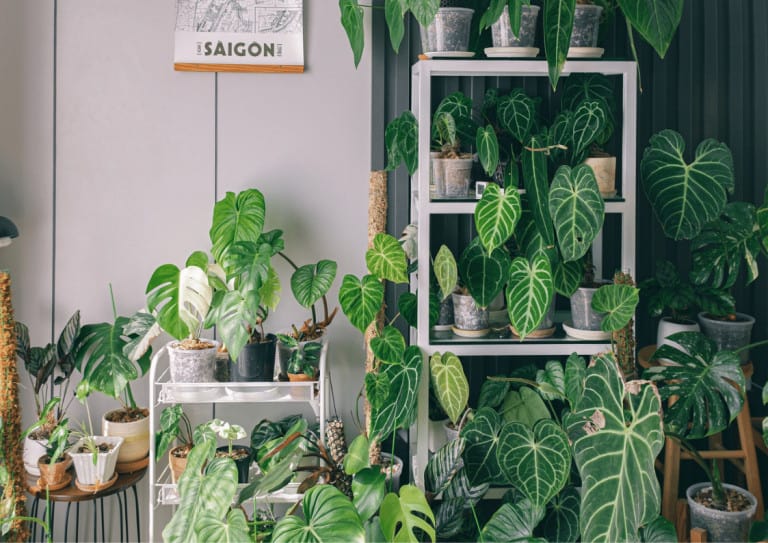
How can I ensure that my indoor plants get enough sunlight?
Indoor plants should be placed in windows, where the sun will reach them every now and then. You should choose the specific window wisely. If you’re in the northern hemisphere, plants with high bright light needs will need a south-facing window. With that being said, most indoor plants only need west and east windows, where they can receive moderate lighting.
You should ensure that your windows are clean to promote more light streaming in. If possible, you can also try bringing your plants into the open air. Opening a window works as well for this purpose.
Next, make sure that you rotate your plants regularly. When placed at a window, only one side of a plant gets proper sun exposure. The rest of it ends up being left in the shade. To rectify this, simply rotate the pot on its axis regularly on a schedule that’s uniform and easy to remember. However, do note that when a plant is budding, rotating it may not be a good idea.
If all else fails, you can opt to use artificial light for your indoor plants. Most indoor plants will prefer to have some real light, but electric options will do if you have little other choice. Just make sure that you turn the lights on and off in a way that mimics the sun’s progression. Leaving the lights on for 24 hours can prevent a plant from getting sufficient rest.
Before you go…
Not all indoor plants need direct sunlight. Individual plant species have unique care needs when it comes to preferred lighting, whether they want direct, partial direct, or indirect lighting. On average, you should expect to try and give your plant between 6-10 hours of sun exposure, with variations for specific species.
To ensure that your indoor plants get enough sunlight, place them in the right window for their sunlight preferences based on what hemisphere you’re in. Then, keep the windows clean, open them every now and then, and rotate your plants so they’re evenly exposed to sunlight. If you must, artificial lighting works in a pinch!

Lakeisha Ethans
Houseplant Writer
Mother to two humans and hundreds of plant babies. Lakeisha uses her 15 years of experience as a content writer to specialise in simplifying what you need to know to grow and care for all indoor plants.
Similar Posts
Do Christmas Cactus Flowers Change Colors?
One year, your Christmas cactus flowers are yellow, but the next, they've turned pink. Why does this happen and is it a cause for concern?
What Light Spectrum Is Best For Flowering Indoor Plants?
Light is crucial to help indoor plants grow and even go on to flower. Find out which spectrum of light you should provide your plants to see some blooms.

